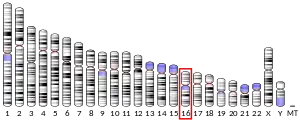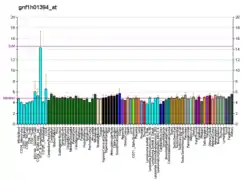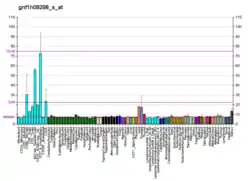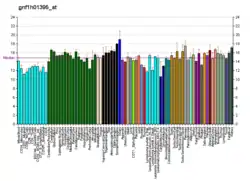| CHTF8 | |||||||||||||||||||||||||||||||||||||||||||||||||||
|---|---|---|---|---|---|---|---|---|---|---|---|---|---|---|---|---|---|---|---|---|---|---|---|---|---|---|---|---|---|---|---|---|---|---|---|---|---|---|---|---|---|---|---|---|---|---|---|---|---|---|---|
| Identifiers | |||||||||||||||||||||||||||||||||||||||||||||||||||
| Aliases | CHTF8, CTF8, DERPC, chromosome transmission fidelity factor 8 | ||||||||||||||||||||||||||||||||||||||||||||||||||
| External IDs | OMIM: 613202 MGI: 2443370 HomoloGene: 84588 GeneCards: CHTF8 | ||||||||||||||||||||||||||||||||||||||||||||||||||
| |||||||||||||||||||||||||||||||||||||||||||||||||||
| |||||||||||||||||||||||||||||||||||||||||||||||||||
| |||||||||||||||||||||||||||||||||||||||||||||||||||
| |||||||||||||||||||||||||||||||||||||||||||||||||||
| |||||||||||||||||||||||||||||||||||||||||||||||||||
| Wikidata | |||||||||||||||||||||||||||||||||||||||||||||||||||
| |||||||||||||||||||||||||||||||||||||||||||||||||||
Chromosome transmission fidelity protein 8 homolog is a protein that in humans is encoded by the CHTF8 gene.[5][6]
This gene encodes a short protein that forms part of the Ctf18 replication factor C (RFC) complex that occurs in both yeast and mammals. The heteroheptameric RFC complex plays a role in sister chromatid cohesion and may load the replication clamp PCNA (proliferating cell nuclear antigen) onto DNA during DNA replication and repair.
This gene is ubiquitously expressed and has been shown to have reduced expression in renal and prostate tumors. Alternative splicing results in multiple variants encoding different isoforms. This gene has a pseudogene on chromosome X.[6]
References
- 1 2 3 GRCh38: Ensembl release 89: ENSG00000168802 - Ensembl, May 2017
- 1 2 3 GRCm38: Ensembl release 89: ENSMUSG00000046691 - Ensembl, May 2017
- ↑ "Human PubMed Reference:". National Center for Biotechnology Information, U.S. National Library of Medicine.
- ↑ "Mouse PubMed Reference:". National Center for Biotechnology Information, U.S. National Library of Medicine.
- ↑ Merkle CJ, Karnitz LM, Henry-Sanchez JT, Chen J (Aug 2003). "Cloning and characterization of hCTF18, hCTF8, and hDCC1. Human homologs of a Saccharomyces cerevisiae complex involved in sister chromatid cohesion establishment". J Biol Chem. 278 (32): 30051–6. doi:10.1074/jbc.M211591200. PMID 12766176.
- 1 2 "Entrez Gene: CTF8 chromosome transmission fidelity factor 8 homolog (S. cerevisiae)".
External links
- Human CHTF8 genome location and CHTF8 gene details page in the UCSC Genome Browser.
Further reading
- Mayer ML, Gygi SP, Aebersold R, Hieter P (2001). "Identification of RFC(Ctf18p, Ctf8p, Dcc1p): an alternative RFC complex required for sister chromatid cohesion in S. cerevisiae". Mol. Cell. 7 (5): 959–70. doi:10.1016/S1097-2765(01)00254-4. PMID 11389843.
- Strausberg RL, Feingold EA, Grouse LH, et al. (2003). "Generation and initial analysis of more than 15,000 full-length human and mouse cDNA sequences". Proc. Natl. Acad. Sci. U.S.A. 99 (26): 16899–903. Bibcode:2002PNAS...9916899M. doi:10.1073/pnas.242603899. PMC 139241. PMID 12477932.
- Sun M, Ma L, Xu L, et al. (2004). "A human novel gene DERPC on 16q22.1 inhibits prostate tumor cell growth and its expression is decreased in prostate and renal tumors". Mol. Med. 8 (10): 655–63. doi:10.1007/BF03402176. PMC 2039945. PMID 12477976.
- Bermudez VP, Maniwa Y, Tappin I, et al. (2003). "The alternative Ctf18-Dcc1-Ctf8-replication factor C complex required for sister chromatid cohesion loads proliferating cell nuclear antigen onto DNA". Proc. Natl. Acad. Sci. U.S.A. 100 (18): 10237–42. Bibcode:2003PNAS..10010237B. doi:10.1073/pnas.1434308100. PMC 193545. PMID 12930902.
- Brandenberger R, Wei H, Zhang S, et al. (2005). "Transcriptome characterization elucidates signaling networks that control human ES cell growth and differentiation". Nat. Biotechnol. 22 (6): 707–16. doi:10.1038/nbt971. PMID 15146197. S2CID 27764390.
- Suzuki Y, Yamashita R, Shirota M, et al. (2004). "Sequence Comparison of Human and Mouse Genes Reveals a Homologous Block Structure in the Promoter Regions". Genome Res. 14 (9): 1711–8. doi:10.1101/gr.2435604. PMC 515316. PMID 15342556.
- Rual JF, Venkatesan K, Hao T, et al. (2005). "Towards a proteome-scale map of the human protein-protein interaction network". Nature. 437 (7062): 1173–8. Bibcode:2005Natur.437.1173R. doi:10.1038/nature04209. PMID 16189514. S2CID 4427026.
- Kimura K, Wakamatsu A, Suzuki Y, et al. (2006). "Diversification of transcriptional modulation: Large-scale identification and characterization of putative alternative promoters of human genes". Genome Res. 16 (1): 55–65. doi:10.1101/gr.4039406. PMC 1356129. PMID 16344560.
This article is issued from Wikipedia. The text is licensed under Creative Commons - Attribution - Sharealike. Additional terms may apply for the media files.






